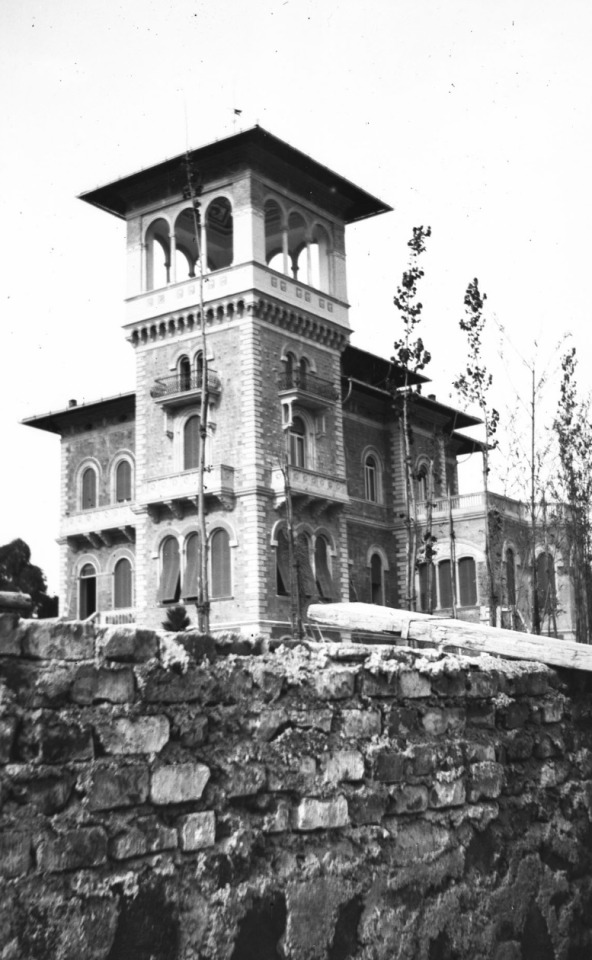#Titta Ruffo
Text

Cakes beat arias: Charles Boccia of 3800 White Plains Rd., the Bronx who, after 35 years of baking, attempted an operatic career, 1927.
After overcoming several difficulties, he got a private tryout before Titta Ruffo, the great bass of the Metropolitan Opera, who predicted a great career for him. However, Boccia decided to return to his large shop in the Bronx—more secure than singing.
Photo: Bettmann Archive/Getty Images/Fine Art America
#vintage New York#1920s#opera#singer#Charles Boccia#baker#Titta Ruffo#Bronx#career change#vintage NYC
152 notes
·
View notes
Text

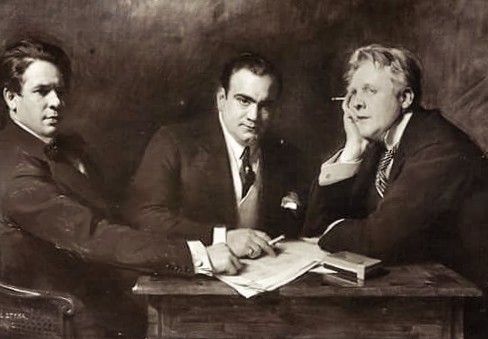
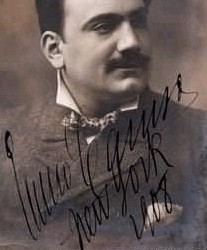
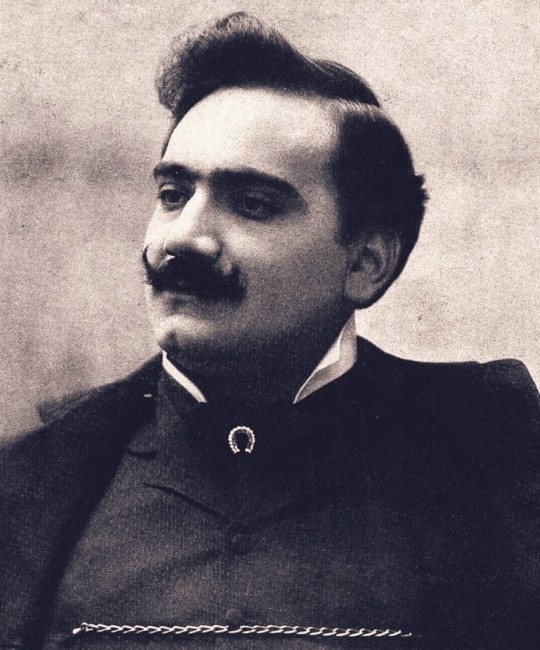



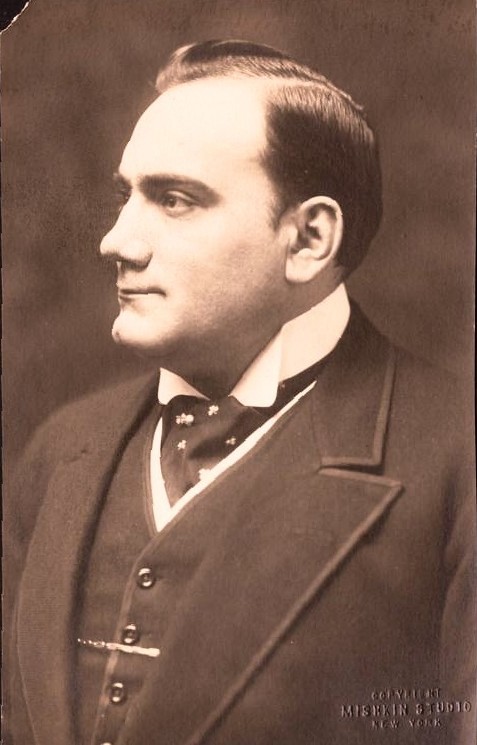

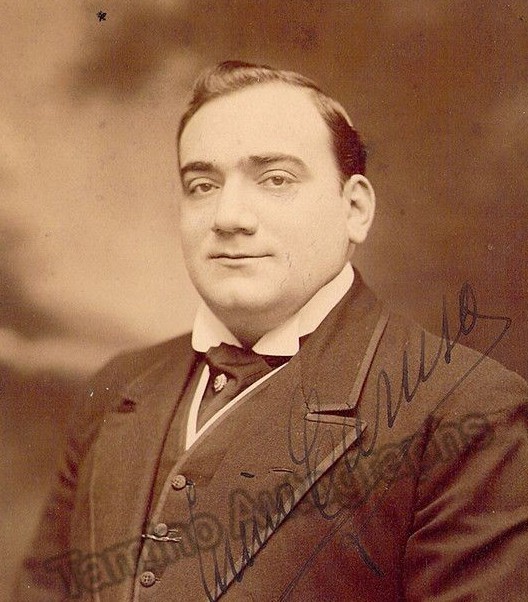
ENRICO CARUSO
Enrico Caruso & Lina Cavalieri
Titta RUFFO, CARUSO & Fyodor CHALIAPIN
CARUSO Autographs
CARUSO; Color: Unknown
IDEM
The GREAT CARUSO
CARUSO; Copyright ©️ Rizzo, Sao Paulo
CARUSO; Copyright ©️ MISHKIN NY
CARUSO; Copyright ©️ Tamino Autographs
The Great CARUSO
5 notes
·
View notes
Text
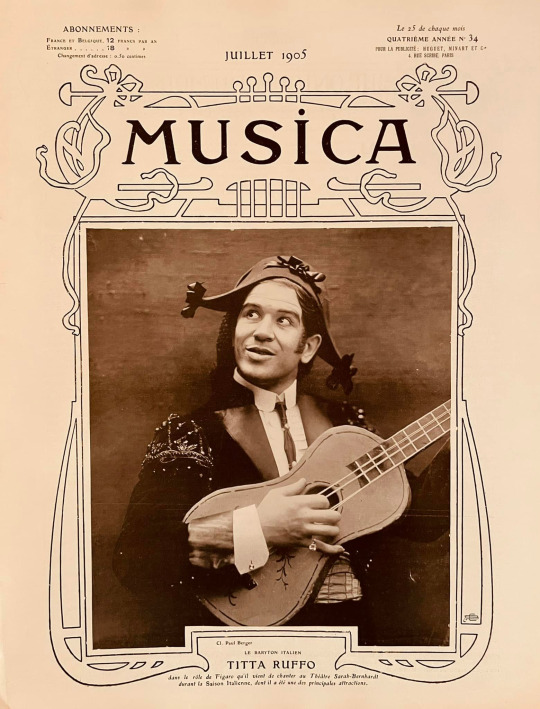
On this Cover from 1905 we see the great Baritone TITTA RUFFO (1877-1953). He died at July 5. 1953 in Florence. His voice was one of the best at that time. 37 years on Stage in Paris, London, New York, Italy and South-America.
#Titta Ruffo#Metropolitan Opera#Paris Opéra#Voce del leone#voice of the lion#Italian operatic baritone#baritone
2 notes
·
View notes
Text
Alejo Carpentier ~ La città-opera
Gustav Klimt, Music, 1895
Ogni opera ora promoveva ovazioni, mormorii, zittii, esclamazioni, i cui motivi erano del tutto estranei alla qualità della musica o alla riuscita di un’interpretazione.
[…] E così, soddisfacendo una vecchia aspirazione, finalmente realizzabile, il Primo Magistrato pensò alla possibilità di metter su una stagione d’opera dentro la città-opera, capitale della…
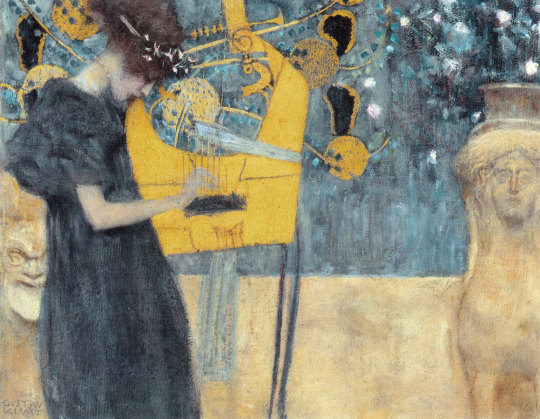
View On WordPress
#Alejo Carpentier#Elena Clementelli#Enrico Caruso#Gabriella Besanzoni#Lucrezia Bori#Luigi Nicoletti Korman#Mansueto Gaudio#Maria Barrientos#Maria Jeritza#Riccardo Stracciari#Titta Ruffo
0 notes
Text
Milano: Il concerto "Le macchine parlanti" al Museo Nazionale Scienza e Tecnologia Leonardo da Vinci

Milano: Il concerto "Le macchine parlanti" al Museo Nazionale Scienza e Tecnologia Leonardo da Vinci.
In occasione delle celebrazioni dei 150 anni dalla nascita del tenore Enrico Caruso, il Museo Nazionale Scienza e Tecnologia Leonardo da Vinci di Milano ospita domenica 14 maggio alle ore 16 nella Sala delle Colonne un concerto tributo gratuito in suo onore. L’evento è a cura del Museo e di Luciano Pituello, presidente dell’Associazione Museo Enrico Caruso - Centro Studi Carusiani di Milano , che ha svolto un ruolo fondamentale nella diffusione della lirica italiana in Italia e all’estero, a tal punto da essere stato nominato, nel 2020, Cavaliere della Repubblica dal presidente Mattarella.
L’evento, dal titolo Le macchine parlanti, sarà una prima valorizzazione pubblica del lavoro svolto negli anni da Pituello e un’occasione unica per presentare la collezione donata al Museo durante la quale lo studioso darà nuovamente voce a fonografi e grammofoni d’epoca in un emozionante viaggio tra teatro dell’opera e storia della tecnologia. Eccezionalmente saranno infatti messi in funzione grammofoni e fonografi per dare voce a dischi secolari, facendo rivivere brani e macchine che hanno fatto la storia della musica.
Per raccontarne meglio il valore, il Museo ha inoltre collaborato con il regista Francesco Clerici alla produzione di un ritratto di Luciano Pituello in forma di video-documentario, di cui sarà proiettato un estratto prima dell’inizio del concerto.
Luciano Pituello e l’Associazione da lui presieduta hanno infatti donato al Museo una significativa collezione di oltre 1400 elementi, tra artefatti, documenti e cimeli, relativi alla storia della riproduzione musicale e dell’industria discografica italiana ed estera, datati dal 1895 al 1935 circa: 87 tra fonografi e grammofoni, 1300 supporti musicali tra cilindri e dischi, di cui 74 rarità (tra cui incisioni di Enrico Caruso, Mattia Battistini, Titta Ruffo e Francesco Tamagno), 61 tra disegni, fotografie, locandine, cimeli commemorativi.
La Collezione Museo Caruso donata al Museo rappresenta in modo esaustivo i primordi delle tecnologie di riproduzione della musica e del canto da fine Ottocento agli anni ’40 del Novecento, con un focus sull’opera lirica italiana e la leggendaria figura di Enrico Caruso, insieme ai cantanti a lui contemporanei che prestarono la loro voce alle prime incisioni commerciali e contribuirono a diffondere la loro fama. I due fondi donati al Museo sono stati raccolti nel corso di diversi decenni dal Cavalier Pituello tramite un’intensa attività collezionistica.
“Sul finire del 1959 ero già molto amante e studioso dell’opera lirica e incominciavo a curiosare fra mercatini di cose vecchie. Ricordo che con la prima tornata, portai a casa 180 dischi a 78 giri di incisioni tra il 1930/40/50. Da qui l’inizio di una passione smisurata che ha dato vita alla ricerca delle voci del passato le cui incisioni si possono collocare fra il 1896 e vanno a finire agli anni 50 del Novecento. La mia personale intenzione fu sempre quella di trovare il mezzo d’ascolto tramite le così dette Macchine parlanti . Mi si creda, l’esperienza di ascolto in oltre 60 anni, mi ha fatto capire come ci si doveva porre per la scelta di brani vocali, valutando la conoscenza delle tonalità musicali, le macchine appropriate e la cura del loro semplice ma allo stesso tempo straordinario meccanismo. Un’avventura senza dubbi che onora la storia”, commenta Luciano Pituello, Presidente dell’Associazione Museo Enrico Caruso - Centro Studi Carusiani.
Il valore della Collezione Museo Caruso, costituita da conoscitori della materia in più di mezzo secolo di collezionismo e di studio, risiede nel suo essere un corpus unitario e coerente, raro e di livello internazionale, in ottimo stato di conservazione. Obiettivo del Museo è rendere disponibile al pubblico questa eredità materiale collegata alla storia della musica e alla sua circolazione, dando risalto a una forma di espressione artistica tra le più importanti per il nostro contesto nazionale.
Il fondo andrà ad arricchire le collezioni del Museo relative a strumenti e tecniche del suono, puntando ad esplorare i rapporti tra arte, scienza e tecnica e permettendo di ampliare la conoscenza di temi come, ad esempio, la storia sociale della riproduzione sonora, dell’industria discografica, della circolazione editoriale della lirica e lo sviluppo delle tecnologie del suono in relazione alla storia della musica, dei consumi e del costume.
“Questa raccolta straordinaria va osservata sotto la prospettiva speciale del Museo, che come sempre parte da una visione d’insieme della cultura, in cui la storia delle arti – in questo caso specifico, della musica lirica – è intrecciata con la storia della scienza e della tecnologia. La Collezione Museo Caruso ci parla di scoperte e innovazioni, ma anche, allo stesso tempo, della quotidianità di tante persone. Può dirci da dove vengono le nostre “abitudini sonore” contemporanee, in cui le tecnologie per la registrazione e riproduzione sonora, seppure in nuove versioni, continuano ad essere molto amate, come avveniva già più di cento anni fa. Una raccolta così ricca e complessa, inoltre, invita gli esperti a compiere studi e racconti di tipo interdisciplinare. Il suo valore risiede proprio nella capacità di creare un dialogo tra interessi diversi”, spiega Simona Casonato, Curatrice collezioni, area Media, ICT e Cultura Digitale del Museo....
#notizie #news #breakingnews #cronaca #politica #eventi #sport #moda
Read the full article
0 notes
Video
youtube
Titta Ruffo - Torna a Surriento (De Curtis) 20 - 3 -1929
0 notes
Photo

Portrait of Italian operatic baritone Titta Ruffo (1877 – 1953) as the evil clown Tonio from the Italian opera Pagliacci. 1913.
We wish our followers a pleasant night.
91 notes
·
View notes
Link
2 notes
·
View notes
Text
undefined
youtube
Gosh, his voice was built like a tank.
4 notes
·
View notes
Photo
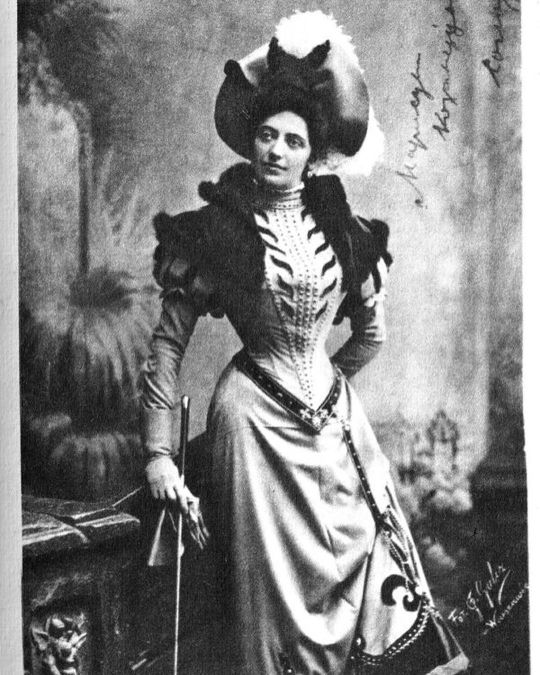
🔸 Solomiya Amvrosiivna Krushelnytska. (Ukrainian: Соломія Амвро́сіївна Крушельницька; September 23rd 1872 — November 16th 1952) was a Ukrainian soprano, considered to be one of the brightest opera stars of the first half of the 20th century. Among her numerous awards and distinctions, in particular, the title of "Wagner's diva" of the 20th century. Singing with her on the same stage was considered an honour for Enrico Caruso, Titta Ruffo, Fedor Chaliapin. Italian composer Giacomo Puccini presented the singer with his portrait with the inscription "The most beautiful and charming Butterfly". In the modern Ukrainian tradition, she is included in the list of most famous women of ancient and modern Ukraine Here are earlier pictures of her 1900s - 1910s. #victorianchaps #oldphoto #vintage #edwardian #retro #Victorian #ukraine #1900s #1910s #goodolddays #pastlives #opera #singer #celebrity #history (at Ukraine) https://www.instagram.com/p/Ca7y_EQACYy/?utm_medium=tumblr
#victorianchaps#oldphoto#vintage#edwardian#retro#victorian#ukraine#1900s#1910s#goodolddays#pastlives#opera#singer#celebrity#history
7 notes
·
View notes
Photo

Titta Ruffo, Italian operatic baritone
c. 1913
Source: Library of Congress
57 notes
·
View notes
Text

Ernestina Poli was born in Ferrara, Italy on 3 April 1879, and she studied for only a few years before making her debut at Bergamo in 1902 as Amelia in Un Ballo in Maschera. She had a huge success and was retained for another dozen performances in Il Trovatore and the then very popular Salvator Rosa. She ended the year at Massa. At this point, despite her success, she retreated from the stage for another year of training, after which she debuted at Messina in Andrea Chenier with the tenor Ruggero Randaccio. On 17 Jan, 1904 she sang Micaela for the only time in her career, again with Randaccio as her stage partner. It was not long before the couple announced that they were to be joined in life, and in the summer of 1904, shortly before a tour to South America, they were married. She immediately changed her stage name to Tina Poli Randaccio, and there are interesting and amusing confusions in some South American reviews during the tour of 1904, in which she is listed as the tenor, he the soprano. Poli was assumed to be his first name and Ruggera, hers.
The tour took the couple to Sao Paolo and Rio de Janeiro where Tina appeared as Mimi, the Trovatore Leonora, Desdemona, Aida, Maddalena di Coigny, Gioconda and Santuzza. He sang in Boheme, Andrea Chenier and Cavalleria Rusticana. The year ended at Sao Paolo with an opera called Cristo alla Festa di Purim, after which she added La Forza del Destino, Ballo in Maschera and Ernani to her assignments in Brazil. The couple traveled with the company to Manaus and Pernambuco, then returned to Europe where Ruggero announced his retirement from the stage. They decided that he would be her manager and coach, and from about this point his name was never seen on a billboard again.
On 2 December 1904 Tina debuted at Milan's Teatro Dal Verme in an opera called Jana with Bergamasco and Schiavazzi conducted by Serafin and from there she went to Oporto where she sang in Aida, Il Trovatore, Don Carlo, Pagliacci, Un Ballo in Maschera and Cavalleria Rusticana. After a short respite, the couple sailed for Mexico, and in September 1905 Tina appeared at the capitol in Les Huguenots (in Italian), Aida, Germania, Un Ballo in Maschera and Giordano's recently produced opera Siberia. The company included Virginia Guerrini, Alice Zeppilli, De Marchi and Magini Coletti, and it is not surprising, given those names, that the tour extended for four months and included visits to Guadalajara.
Turin welcomed her back to Italy when she appeared at the Teatro Vittorio Emanuele as Gioconda in January of 1907. A tour to Bucharest was arranged by Randaccio and on 11 November Tina debuted as Aida in a cast that included De Angelo, Angioletti and Bellat. On the 18th, she sang in Ernani with Angioletti, Titta Ruffo and Torres de Luna. Her season continued into the middle of December with Un Ballo in Maschera and Il Trovatore, both with Ruffo, Les Huguenots, and La Gioconda. A visit was made to Kiev and Odessa, but I have no record of her roles.
Tina debuted at Parma's Teatro Regio on 6 January 1908 in Mascagni's brand new opera, Amica and after singing in Red Roses and Damnation of Faust, she undertook a four month tour of Italy with the new work, under Mascagni's direction. The cities visited included, Firenze, Bologna, Modena, Verona, Treviso, Trieste, Ravenna, Ancona, Cesena and Forli, where she received a thunderous welcome and was hailed as the greatest soprano seen there in a generation. At Livorno she sang in the composer's Le Maschere and Iris and the tour ended at Rome's Teatro Adriano, where Tina sang eleven performances of Amica and several of Le Maschere, the latter with Juanita Caracciolo and Carlo Galeffi.
On 26 December, Tina made a much heralded debut at Venice's Teatro la Fenice as Aida with Ladislava Hotkowska and Henderson. The revival was so well received that a scheduled three performances became six. At Fiume, in April, she sang in Ernani and La Gioconda and in October she returned to the Adriano for Tosca, Aida and the world premiere of Raffaelo,by De Lunghi.
In February 1910 Tina debuted at Madrid's Teatro Real as Gioconda in a cast that included Flora Perini, Giuseppe Taccani and Ruffo, after which she sang ten performances of Aida and six of Loreley at Catania's Masimo Bellini. The spring found the Randaccios back in Brazil, where, at Rio de Janeiro, on 27 May, Tina sang Isolde for the only time in her career, though it was a moderate, if not overwhelming success. At Rio, she also sang in Il Trovatore, La Gioconda, Loreley, Tosca, Aida, and Germania, and at Sao Paolo, she added another new work, Boscaiuola. Tina's tour partners included Anna Gramegna, Krismer, Giraldoni and Viglione-Borghese, and, as had been the case in Mexico, this starry roster resulted in an extended season both in Rio and in Sao Paolo.
The most important moment of her career had arrived. On 17 December 1910 Tina debuted at La Scala as the Siegfried Brunnhilde, with the inimitable Giuseppe Borgatti in the title role. There were a dozen performances, and the production was a complete success. Fanny Anitua was an unforgettable Erda according to contemporary reviews, and the hero and heroine received memorable ovations every evening. Though hers would not be a major career in the most important of all Italian theaters, it continued at intervals for a good number of years, and included several world premiers.
In February 1911 Tina returned to Parma for La Gioconda and then took a well needed break from performing. During the summer, she learned the role of Minnie in La Fanciulla del West, and on 10 September, at Puccini's invitation, she sang the first of thirteen performances at Lucca's Teatro del Giglio with Taccani as Dick Johnson. Her success was enormous, in fact, greater than her predecessor, Eugenia Burzio, who had sung in the Italian premiere earlier in the season. Poli was immediately engaged to repeat the opera at Naples' San Carlo with Martinelli and Viglione-Borghese and at Bari's Teatro Petruzzelli with Corti and Mariano Stabile. After a debut at Palermo's Massimo as Gioconda in March 1912, she sang Minnie at Monte Carlo, again with Martinelli and Viglione-Borghese, and in late May she debuted at the Paris Opera as Minnie in a gala performance with Enrico Caruso.
In November, Tina sang in La Gioconda at Genoa and then prepared for the Scala premiere of Fanciulla. There were many sopranos who had vied for the honor, whose partisans had lobbied intensely for them, and the uncertainty had been a major story in Italian newspapers. Burzio reigned at Scala, but it was not to be. Tina's reputation as Minnie was by now so secure that both Scala's management and the composer agreed that she deserved the honor. On 29 December, before a star studded audience, the Milan theater presented La Fanciulla del West for the first time with Poli Randaccio, Martinelli and Galeffi. Tullio Serafin was on the podium, and the clamor was so enormous that the opera was repeated fourteen times.
Tina repeated Minnie at Monte Carlo in February 1913 with Martinelli and George Baklanov, after which she sang the role at the site of its Italian premiere, the Costanzi of Rome. In the spring there were concerts at Modena in honor of the centenary of Verdi's birth and on 15 December, Tina sang in the world premiere of Mascagni's Parisina at La Scala under the composer's baton. The cast included Luisa Garibaldi, Hipolito Lazaro and Galeffi, and there were twelve performances.
On 10 February 1914 Poli sang in the world premiere of Smareglia's Abisso and on 2 April in the world premiere of Alfano's Ombra di Don Giovanni, both at La Scala. In May she sang in Tosca at Milan's Teatro Carcano with Garbin and Viglione-Borghese and in October Tina participated in one of this century's most important stage debuts, that of Beniamino Gigli as Enzo, at Rovigo, on 15 October. It was the scene of veritable riots; a star had truly been born, and there were thirteen performances. Tina's year ended with Un Ballo in Maschera at Piacenza, a revival shared with the equally celebrated Celestina Boninsegna.
Rome's Costanzi welcomed Tina back as Gioconda, Tosca and Minnie in the winter of 1915, and after Gioconda at Naples and Aida at Firenze, she sailed for South America and her debut at the Teatro Colon of Buenos Aires. On 25 May, Poli debuted as Gioconda in a cast that included Perini, Lazaro, and Riccardo Stracciari. La Prensa referred to her as "a major talent whose voice can send shivers down one's spine, so present and immediate is the reaction". On 6 June she sang Santuzza and on the 17th, she sang in a concert with Caruso, Bernardo de Muro, Mario Sammarco and Lazaro. The season ended with Tosca and had included performances with the company at Cordoba and Rosario, where she sang Tosca and Santuzza, and at Tucuman, where she sang Santuzza.
Tina traveled from Argentina to Santiago, Chile, and on 27 August, she opened the season at the Teatro Municipal in La Fanciulla del West. The work was so well received that an additional performance was added; it was the only opera to be seen as many as four times. She stayed at Santiago for two months, singing Tosca, Aida, Gioconda, Santuzza, the Trovatore Leonora and Maddalena di Coigny and appeared as Aida, Tosca, Gioconda and the Trovatore Leonora at Valparaiso. Tina returned to Buenos Aires in late October where, at the Teatro Coliseo, she sang all of her Chilean roles except for Maddalena, and after a brief rest, she undertook a long tour of the Caribbean Basin. World War I was in its most intense period and the safety of the Western Hemisphere certainly seemed more attractive than the dangers of Europe.
On 29 January 1916 Tina debuted at Havana as Aida, and later sang in Tosca, Il Trovatore, Cavalleria Rusticana, Iris, La Gioconda, Les Huguenots, and La Fanciulla del West. Her tenor partners were Lazaro and Zinoviev; Enrico Roggio carried most of the baritone weight and Amelita Galli-Curci appeared with Poli in Les Huguenots (in Italian). The company stayed at the Cuban capitol for nearly two months, then toured to Cienfuegos, Camaguey, Santiago de Cuba, Mananzas and in the late spring, to Costa Rica.
In November Tina returned to Italy for Tosca at Bologna with Aureliano Pertile and Jose Segura-Tallien and in January 1917 she sang at Milan's Dal Verme in a gala concert, including act 3 of Aida and act 4 of La Gioconda. At La Spezia she sang Aida, and in June Tina debuted at Zurich as Tosca with Gubellini and Sammarco. After singing Santuzza at the Swiss theater, she returned to the Dal Verme for Aida and at Genoa, she sang in La Gioconda with Vita Ferluga, Folco-Bottaro and Galeffi.
Tina decided that the climate in Europe was not what the doctor ordered, and in fact, work was difficult to find for nearly everyone in 1917. Many of Italy's most important theaters were closed, and those that remained open presented very shortened seasons. Havana again beckoned and Tina returned in December for Aida, La Fanciulla del West, Les Huguenots, Tosca, La Gioconda, L'Africaine, La Boheme and a new opera, Doreya. Her colleagues included the tenor, Jose Palet, Edith Mason, Maria Barrientos and the basses, Nicoletti-Korman and Virgilio Lazzari. The tour again included Camaguey, Cienfuegos and Santiago. In mid March 1918, the company moved to San Juan and Ponce for a two month season in Puerto Rico. Poli sang the same roles and added Amelia in Un Ballo in Maschera. In June, at Caracas, Venezuela she sang in Aida, Tosca, Les Huguenots, La Gioconda and Cavalleria Rusticana.
The Great War was over and Tina returned to the safety of a victorious Italy for La Gioconda at Bologna, Milan's Teatro Lirico and Firenze's La Pergola. On 18 December she reappeared in glory for the first of eleven performances of Aida at La Scala. The next few months were spent at Turin with Cavalleria Rusticana and Aida. It was during the revival of Aida that Tancredi Pasero made his absolute opera debut as Il Re, substituting for an indisposed colleague. It is with some pride that the author acknowledges this event, since Pasero's debut has always been listed as at Vicenza in La Sonnambula much later in the year. And with pleasure, I also acknowledge that this information was kindly provided by Robert Tuggle of the Metropolitan Opera Archives.
After La Fanciulla del West at Trieste's Teatro Rossetti, in late November, Tina debuted as Aida at Barcelona's Liceo and in December she completed her engagement as Gioconda. In January 1920 Tina sang thirteen performances of Aida at Trieste's Teatro Verdi with the stellar cast of Giuseppina Zinetti, Miguel Fleta and Carmelo Maugeri. Rome's Costanzi welcomed Poli back with seven performances of La Gioconda and Genoa saw her as Santuzza in March. May was spent at the Fenice of Venice, where Tina sang in Suor Angelica with Elvira Casazza and in Aida. In June, she traveled to London for a debut at Covent Garden in Tosca with Fernand Ansseau and Dinh Ghilly and was very poorly received by both public and press who recoiled from her strong vibrato and melodramatic impersonations. Tina left London after one performance, never to return.
However, on 31 July she was welcomed with an enormous ovation at the Verona Arena when she sang in Aida with Zinetti and Pertile. After La Gioconda at Turin's Teatro Chiarella, Tina returned for a very long season at Barcelona, appearing in Aida, La Gioconda, Un Ballo in Maschera, Lucrezia Borgia, Cavalleria Rusticana and Ernani, as well as in act two of Tosca during a gala benefit. Her reviews were nothing short of magnificent and in Gioconda, she was heralded by several critics as the greatest that the city had ever seen or heard. The Liceo and Tina Poli Randaccio would continue their love affair over several more seasons.
In 1921, Tina appeared at Brescia and Trieste for La Gioconda, Palermo for La Gioconda and La Fanciulla del West, Rome for Aida, the Milan Arena for La Gioconda, Vicenza for La Fanciulla del West with Ismaele Voltolini and Stabile, Venice for La Gioconda and at Parma on 29 December in a stellar revival of the Ponchielli work with Giannina Arangi Lombardi as Laura, Irene Minghini Cattaneo as La Cieca, Voltolini as Enzo, Noto as Barnaba and Bruno Carmassi as Alvise.
The new year found her in revivals of La Fanciulla del West at Naples, Milan's Carcano and at Turin where she was joined by Voltolini and Apollo Granforte. The Dal Verme hosted Tina in Il Trovatore with Zinetti, John O'Sullivan and Benvenuto Franci in October, and after eleven performances of Les Huguenots at Bologna with O'Sullivan, Poli returned to Barcelona for Aida with Aurora Buades and Lazaro, Tosca with Lazaro and Les Huguenots with Cassini and Lazaro.
Tina debuted at Cairo on 27 January 1923 as Gioconda and continued her season as Minnie and Santuzza, after which she repeated all three roles at Alexandria. Santuzza was the role of her return to Milan's Teatro Lirico in May and on 11 August she appeared at Venice's Lido di San Nicola in Aida with the riveting Gabriella Besanzoni. In November, Trieste saw Poli as Gioconda and on the 22nd, she sang in a gala performance of Aida at Rome's Costanzi in honor of the King and Queen of Spain. Zinetti, De Muro and Enrico Molinari completed the stellar cast and the conductor was Mascagni. Tina's year ended at Mantua with four performances of Tosca, after which she appeared at Brescia's Teatro Grande in Loreley. Neapolitan audiences appreciated her Trovatore Leonora and Romans admired her in L'Africaine with Pasini, Giulio Crimi, Molinari and Pasero and in Tosca with Crimi and Stracciari.
In the summer Tina debuted at Vienna as Aida with Maria Gay, Giovanni Zenatello and Viglione-Borghese, a revival that had to be repeated sixteeen times before moving to Kaiserdam, Germany in September. Berlin saw her Santuzza before she returned to Barcelona in November for another daunting season. This time Tina sang in Aida, Les Huguenots, L'Africaine and a new work, Suor Beatrice. Though Tina Poli Randaccio is primarily remembered in Italy as the quintessential Italian dramatic soprano, she had by now appeared in twenty countries, and with the singular exception of England, had been rapturously received in all. There would be a twenty first.
1925 began at Naples with L'Africaine and on 30 January, Tina returned to the Costanzi for La Fanciulla del West with Crimi and Parvis. After further performances of Tosca and Aida at the San Carlo in February, she returned to Rome for Il Trovatore and Aida. The Lido di San Nicola at Venice feted Tina to a serata di gala on 1 August as the prelude to an engagement as Aida at the Fenice, after which she sang in Tosca at Rimini with Pertile and Viglione-Borghese. In October, she returned to Genoa for La Gioconda, and on Christmas Night 1925, at Bari's Teatro Piccinni, she sang Norma for the first time. Though she sang six performances, it was not a great critical success, and she decided to drop plans for several other planned engagements in the role.
Trieste's Teatro Verdi hosted Tina in Abisso and Il Trovatore at the outset of 1926, after which she sang in La Fanciulla del West at Genoa's Carlo Felice, in Aida and a Benefit Concert at Rome's Costanzi, and in Il Trovatore at Naples' San Carlo, the last with Ebe Stignani. Poli had been singing for a quarter century and it had been an enormously intense and successful twenty five years, but Father Time, as he will, began to play his inevitable role. After Naples, it was not until September that Tina again appeared on a stage, when she debuted at the Athens Arena in Aida with Franco Battaglia. And so, her year ended.
La Scala beckoned one more time, and, on 9 March 1927, Tina sang in the world premiere of Guarino's Madame de Challant with Francesco Merli and Carlo Morelli, and with these three performances she said farewell to the theater that had presented her as its first Minnie, and in four world premieres.
Naples again welcomed Tina for Il Trovatore and Aida, and she debuted at Modena's Teatro Comunale in April as Gioconda, and, a week later she unveiled the role of Turandot at the Comunale. At Milan's Carcano she sang in Isabeau and at year's end she returned to Barcelona for the last time, appearing in Aida and La Gioconda, with identical casts, Zinetti, Aroldo Lindi, Granforte and Vela.
In February of 1928 Tina sang in Turandot at the San Carlo and in February, she bade farewell to Naples as Gioconda. In April she returned to Rome, where, at the newly named Teatro Reale, she sang for the last time, when she appeared in Il Trovatore. Her last engagement of 1928 was as Isabeau at Livorno in a revival conducted by Mascagni.
In 1929, Tina sang Gioconda and Santuzza at Milan's Lirico, Turandot at Nice, which is listed in the program as the French premiere of the Puccini opera, Aida at La Spezia and Tosca at Firenze's Teatro Verdi. In 1930, her only Italian engagements were at Genoa where she sang Isabeau, Aida, and Santuzza, after which she sailed to Caracas for a season as Gioconda, Tosca, Maddalena di Coigny, Santuzza and Elena in Mefistofele. There would be no further engagements outside of Italy, and few enough in her homeland though she continued to appear for another six years.
In 1931, she sang Santuzza at Bergamo, Gioconda for Italian Radio both at Rome and Turin, Gioconda in Palermo's Teatro Garibaldi, Nedda at Isola, and Aida at Biela and at Rome's Teatro Adriano. In 1932 she sang in Gioconda at Crema and in Tosca at Milan's Teatro Puccini and at Brescia. 1933 found her again at the Puccini for Isabeau, at the Adriano for Minnie and Aida, and at Milan's Politeama for Santuzza.
In 1934 she returned to Norma, which had played so minor a role in her career, and she sang it at both Monza and the Lido of Pesaro. At Pesaro she also sang Santuzza, a role repeated at Milan's Arena. At year's end she sang Aida at Milan's Nazionale and at the Puccini she sang in La Forza del Destino, a role repeated at Foggia in early 1935. At Foggia she also sang Santuzza. The end came in early 1936, where at Asti and finally at Modena Tina Poli Randaccio sang her opera farwell as Santuzza. The career had encompassed nearly fifty roles, and had presented her on the stages of the World over fifteen hundred times, a monumental parade of memories for nearly two generations of opera goers.
After retiring from the stage, Tina abandoned musical life almost entirely, and died at Milan on 10 February 1956.
#classical music#opera#music history#bel canto#composer#classical composer#aria#classical studies#maestro#chest voice#Tina Poli Randaccio#dramatic soprano#soprano#classical musician#classical musicians#classical voice#classical history#classical#La Scala#Paris Opera#musician#musicians#history of music#historian of music#music education#music theory#diva#prima donna
2 notes
·
View notes
Text
Salvadora Medina Onrubia - Mil claveles colorados
«Mil claveles colorados fue el último libro que quiso escribir Salvadora y en el que, paradójicamente, vuelve al principio, al anarquismo de su juventud, reinventado a lo largo de su vida. Si la fortuna marcó buena parte de su historia, improvisó una forma de distribución de la riqueza genuina, pícara y expeditiva, un pasamanos de billetes para quien lo necesitara, aunque la empresa pudiera no ser legal.
De esos compañeros “enemigos de la propiedad privada, tuvieran o no ideas sociales”, aprendió por ejemplo cómo hacer una furca que, si bien podía servir para la autodefensa, le permitió salvar las joyas frente a otro amigo de lo ajeno que trató de robarle: “Le dije ‘Volvé a Retiro o te arranco los ojos con los dedos’”.
Su grupo de afinidad, sus amigos, ya no existen; “soy ya una mujer vieja y como todos los viejos, me voy quedando sola. Todos los amigos, todos los ‘compañeros’ se han ido yendo antes que yo. No tengo nadie con quien hablar en nuestro propio idioma”
Simón Radowitzky, Kurt Wilckens, Severino Di Giovanni, Juan Carulla, Simplicio de la Fuente y Encarnación Represas. Titta Ruffo, el panadero Silveyra, Claudio Martínez Paiva, todos están narrados a través de anécdotas que parecen historias de aventuras. Fugas, expropiaciones, dinamita y dos muertos: Severino y Kurt. Para ellos son los claveles colorados, “otras flores no se les pueden dar”. Cuando Kurt Wilckens fue asesinado, guardó sus cenizas en el cementerio de la Recoleta, ¿qué fue de ellas cuando la familia vendió la bóveda? Lo que permanece en Salvadora es el principio de la ayuda mutua.
El grupo de afinidad incluye la amistad y le da un carácter político, alimentado de ideas antiautoritarias y una práctica revolucionaria común; van a estar juntos contra lo inclemente de la vida. Salvadora en este libro restituye memoria, no exenta de humor. Mil claveles colorados fue pasado a máquina por su hija China porque Salvadora ya no quería tipear, aunque escribió agregados a mano. En una visita de Emma Barrandeguy, Salvadora le dio una copia para que se llevara. Emma se la dio a María Moreno que la trajo a Buenos Aires. un día, en una de nuestras conversaciones sobre Salvadora me dijo “te voy a dar los claveles” y volvió con algo que no eran flores».
Vanina Escales.
Enlace [PDF]: Salvadora Medina Onrubia - Mil claveles colorados

13 notes
·
View notes
Text
Marilyn Horne
Renata Tebaldi
Alfredo Kraus
Titta Ruffo
Boris Christoff
Què dir-vos de l’amic Jesus! Durant molt temps i a l’inici d’IFL, que es quan va començar la nostra amistat arran d’un inoblidable viatge a Paris, ell i les seves envejables i inoblidables cròniques, sobretot des del MET, van configurar el que encara podeu consultar en la pàgina permanent a IFL, AMFORTAS EL CORRESPONSAL.
Ençà d’aquell viatge hem tingut l’oportunitat de compartir algunes entranyables trobades, també amb la magnífica familia que l’envolta, trobades no només operístiques i malgrat que darrerament no ens sovintegem tant perquè les circumstàncies personals, tan seves com meves, han canviat, tots dos sabem que si ens necessitem per alguna cosa allà estarem.
El seu qüestionari no defuig cap de les preguntes, me’l va contestar fa un any i segurament ara, com ja em va dir quan me’l va enviar, canviaria alguna cosa, com de fet us succeeix a tots, perquè a banda de que limitar tant la resposta sempre et fa deixar a algú imprescindible a fora, les nostres preferències, filies i fòbies són mutants i encara que hi ha coses inamovibles, limitar-ho a una única opció al cap d’un any d’haver-ho escrit podria ser susceptible de canvi. En qualsevol cas fa un any, com ara, era un qüestionari magnífic.
Aquí el teniu:
La primera vegada que vas anar a l’òpera quin any va ser? Juliol de 1.988
A quin teatre? Teatre Grec de Barcelona
Quina òpera vas veure? Rigoletto
Els teus pares anaven o van a l’òpera? La meva mare alguna vegada
Quin compositor operístic t’estimes més? Richard Wagner
Quina és l’aspecte que valores més d’una representació operística? La musica
Quin és el teu tenor predilecte? Alfredo Kraus
Quina és la teva soprano predilecta? Renata Tebaldi
Quin és ell teu baríton predilecte? Titta Ruffo
Quina és la teva mezzosoprano predilecta? Marilyn Horne
Quin és el teu baix predilecte? Boris Christoff
Quin és el teatre dels que has visita que més t’ha impressionat? El Met de NYC
Podries viure en una ciutat sense teatre d’òpera? Si, si està ben comunicada
Quina és la teva òpera predilecte? Ievgeni Onieguin
Quina òpera detestes? Cap
Valora de 1 a 10 la importància del director d’escena en una representació operística 7,5
A quina ciutat del món que no sigui la teva i amb teatre d’òpera, t’agradaria viure? A NYC
Quin és el llibretista operístic preferit? Hugo von Hofmannshtal
Quin és el teu heroi de ficció operística? Dalibor (òpera del mateix nom de Bedrich Smetana)
Quina és la teva heroïna de ficció operística? Floria Tosca
La gravació operística que t’enduries a l’illa deserta? Der Ring des nibelungen dirigida per Hans Knappertsbusch a Bayreuth (Hans Hotter, Wolfgang Windgassen, Gustav Neidlinger,Astrid Varnay, Josef Greindl)
El director d’orquestra operístic preferit? James Levine
El director d’escena preferit? Harry Kupffer
La representació operística que t’hagués agradat assistir? La Traviata a Lisboa amb Alfredo Kraus i Maria Callas
L’òpera barroca que més t’agrada? Orfeo d’en Claudio Monteverdi
L’òpera clàssica que més t’agrada? Le nozze de Figaro de W. A. Mozart
L’òpera romàntica que més t’agrada? Lucia di Lammermoor de G. Donizetti
L’òpera del segle XX que més t’agrada? Die tote stadt de E. W. Korngold
L’òpera del segle XXI que més t’agrada? Doctor Atomic de John Adams
Si poguessis escollir una vocalitat lírica, què t’agradaria ser: soprano, mezzosoprano, contralt, tenor, baríton o baix? Baix.
Com que el Rings de Kna i la Traviata lisboeta ja han il·lustrat més d’un qüestionari, avui us proposo escoltar “Die Tote Stadt” la cabdal obra de Korngold que no és la primera vegada que s’ha esmentat com a òpera predilecta del segle XX. La versió malauradament és només d’àudio però en a mi m’agrada molt, malgrat les estretors de Thomas Sunnegardh en certs moments de la representació, ja que tant la Marietta de Katarina Dalayman com la direcció de Leif Segerstam són magnífiques.
Moltes gràcies Jesus, no cal que et digui que si vols reemprndre les teves cròniques la teva pàgina està activa.
I la setmana vinent, seguint amb el amics, tindré l’honor de presentar-vos el qüestionari de la Isolda, que molts de vosaltres coneixeu com a Teresa Mir 😉
EL QÜESTIONARI IFL DE JESUS (Amfortas) Què dir-vos de l'amic Jesus! Durant molt temps i a l'inici d'IFL, que es quan va començar la nostra amistat arran d'un inoblidable viatge a Paris, ell i les seves envejables i inoblidables cròniques, sobretot des del MET, van configurar el que encara podeu consultar en la pàgina permanent a…
#Alfredo Kraus#Boris Christoff#Die Tote Schtadt#El Qüestionari IFL#James Levine#Marilyn Horne#Renata Tebaldi#Titta Ruffo
0 notes
Photo

Iniciou-se no ano de 1895 as discussões sobre a construção de um teatro especificamente para ópera com um projeto enviado para a Câmara Municipal que tramitou sem sucesso. Em 1898, após o Theatro São José ser destruído por um incêndio, a Câmara Municipal lançou incentivo para o empreendimento da construção de um novo teatro, mediante a isenção de impostos. O empreendimento seria efetuado quando a concessão para isenção de impostos é estabelecida em 50 anos. O local escolhido para a construção foi o Morro do Chá, que já abrigava o Teatro São José. As obras foram iniciadas em 26 de junho de 1903 e finalizadas em 1911. O estilo arquitetônico da obra é o eclético, em voga na Europa desde a segunda metade do século XIX. São combinados os estilos Renascentista, Barroco do setecentos e Art Nouveau, sendo o último o estilo da época. O teatro é estruturado em quatro corpos: a fachada, composta pelo vestíbulo, o salão de entrada e a escadaria nobre; o central, no qual encontra-se a sala de espetáculos; o palco; e, por fim, o ambiente onde estão localizados os camarins. A inauguração estava marcada para o dia 11 de setembro, mas devido ao atraso na chegada dos cenários da companhia Titta Ruffo em São Paulo, pois vinham de turnê pela Argentina, foi adiada para 12 de setembro. Houve uma grande aglomeração de pessoas no entorno do edifício. Cerca de 20 mil cidadãos vieram admirar a iluminação com energia elétrica vinda do interior e do entorno do Theatro Municipal, algo que era atípico na época. Além da inauguração, a noite de 12 de Setembro de 1911 foi cenário do primeiro trânsito da cidade de São Paulo. O espetáculo foi iniciado com a abertura da ópera Guarany, de Carlos Gomes, devido à pressão da crítica paulistana. Seguiu-se depois a encenação da ópera Hamlet, de Ambroise Thomas, com o barítono Titta Ruffo no papel principal. (Wikipédia) #teatromunicipalsp #theatromunicipalsp #arte #cultura #brasil #art #brazil #exposi #arte_ecultura_ #maladedestinos #spdagaroa #splovers #spmetropole #saopaulowalk @theatromunicipalsp (em Theatro Municipal de São Paulo) https://www.instagram.com/p/B8BsXIdp8rH/?igshid=1bb4s82sk8fwf
#teatromunicipalsp#theatromunicipalsp#arte#cultura#brasil#art#brazil#exposi#arte_ecultura_#maladedestinos#spdagaroa#splovers#spmetropole#saopaulowalk
0 notes
